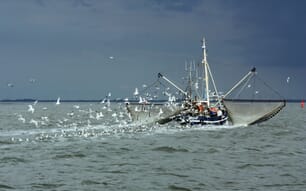The global increase in the supply of salmon was up 33 per cent in the quarter. The demand for the same period has been good, resulting in rising salmon prices.
SalMar Central Norway posted satisfactory results. Despite a relatively low secondary processing volume, InnovaMar's contribution was good. As has previously been announced, the fish farming segment has been affected by biological issues relating to harvested fish.
SalMar Northern Norway's results were affected by a low average weight for harvested fish. Due to changes in operational plans it was necessary to harvest the fish at a lower average weight, which gives a higher production cost per kg and a lower sales price.
The Rauma segment's production of organic salmon improved its performance through the quarter. The complete harvesting of stocks at a site taken over in connection with the acquisition of Bringsvor Laks had a negative impact on the segment's performance. Vikenco's harvesting and secondary processing business posted satisfactory results.
The SalMar Group generated gross operating revenues of NOK 811.7 million in the first quarter 2012, compared with NOK 1,004.8 million in the same quarter in 2011. Operational EBIT for the Group totalled NOK 43.4 million, compared with NOK 292.0 million in the same quarter last year. This corresponds to an operational EBIT per kg gutted weight of NOK 4.14 for SalMar Central Norway, NOK -0.41 for SalMar Northern Norway and NOK 0.06 for the Rauma segment.
SalMar owns 50 per cent of Norskott Havbruk AS, which operates fish farms in mainland Scotland, the Orkneys and Shetland. The business generated gross operating revenues of NOK 228.8 million in the first quarter and made an operating profit before fair value adjustment of the biomass of NOK 13.3 million. Operating profit per kg gutted weight came to NOK 1.9 in the quarter.
At the close of the quarter SalMar owned 24.8 per cent of the listed Faeroe Islands fish farming company P/F Bakkafrost. The company made a first-quarter operational EBIT of NOK 61.2 million. SalMar's share of the profit after tax and fair value adjustment of the biomass was NOK 4.2 million.
Commenting on the results CEO Yngve Myhre said: "Our first-quarter results were weak. As previously announced, this can be attributed to weak biological performance on the part of the 2010 generation, which has affected the results in all segments. With regard to the harvesting of entire fish stocks where the PD virus has been identified, SalMar will through 2012 and 2013 largely compensate for the loss of this harvesting volume by increasing its exploitation of released MAB at other locations. This may be achieved at a low marginal cost, thus recovering a portion of the financial loss.
"Despite low volumes operating efficiency at InnovaMar was good. The harvesting department is on course to achieve our goal of harvesting 110 fish per minute. With higher volumes in the second half, the secondary processing department will be able to exploit its capacity much better.
"We are very pleased to have successfully concluded several strategically important agreements during the first quarter. The harvesting and processing collaboration with Lery will safeguard both volumes coming in to InnovaMar and SalMar Nord's harvesting capacity.
"The acquisition of 10 production licences in Finnmark gives us a substantial growth potential in the Troms/Finnmark region. The renegotiated borrowing agreement and the addition of new equity provides us with a financial platform for the realisation of further growth," he said.
Including its 50 per cent share of Norskott Havbruk AS, the SalMar Group harvested some 20,744 tonnes gutted weight in the first quarter, with SalMar Central Norway accounting for 11,606 tonnes, SalMar Northern Norway 1,138 tonnes and the Rauma segment 4,550 tonnes, while 3,450 tonnes was harvested in mainland Scotland/the Orkneys/Shetland.
The SalMar Group expects to harvest approx. 120,500 tonnes gutted weight in 2012 as a whole, with SalMar Central Norway handling approx. 74,000 tonnes, SalMar Northern Norway approx. 21,000 tonnes and the Rauma segment approx. 13,000 tonnes. Norskott Havbruk aims to harvest approx. 25,000 tonnes, with SalMar's 50 per cent share amounting to 12,500 tonnes. This represents a 16 per cent increase compared with 2011.
In SalMar's assessment the long-term outlook for the Group and the industry as a whole is bright, although short-term peaks and troughs must be expected as a result of temporary imbalances between supply and demand in the market. The global market grew by more than 30 per cent in the first quarter 2012, which shows that many important markets have the capacity to consume more salmon. In mid-May the price of salmon has risen to levels well above those seen in the second half of 2011. Although a relatively sharp increase in the supply of Atlantic salmon is expected in 2012, SalMar anticipates that the balance between supply and demand, and salmon's position as a healthy and competitively priced food item will result in salmon prices stabilising at a level that generates solid earnings for the most efficient fish farming companies.
PD Affects Salmar Earnings, Long-term Outlook Bright
NORWAY - The SalMar Group posted an operational EBIT of NOK 43.4 million in the first quarter 2012. In addition, SalMar recognised non-recurring costs of NOK 40 million in association with a site in Troms where an outbreak of PD virus led to the harvesting of the entire stock of around 2.1 million salmon. A further NOK 5 million in non-recurring cost was recognised following the identification of PD at a site in central Norway.


